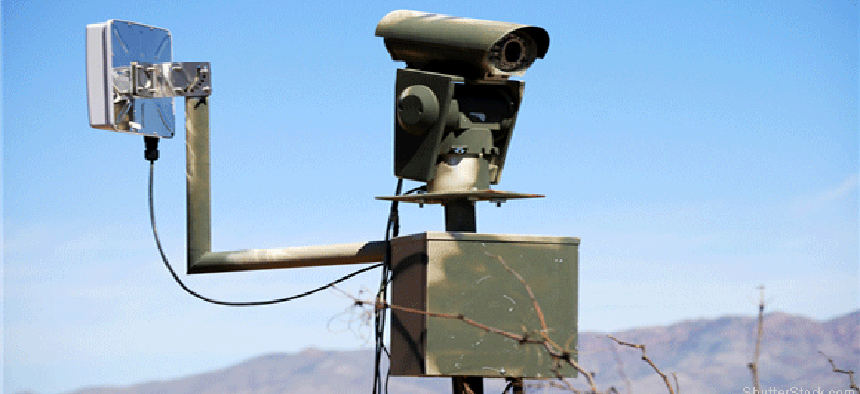Will new border tech put privacy rights at risk?

Privacy advocates are wary of some technologies proposed in border security legislation.

The Electronic Frontier Foundation is concerned that some technologies being proposed in House border security bills are a potential threat to privacy.
The group is concerned that an immigration bill from Reps. Bob Goodlatte (R-Va.) and Michael McCaul (R-Texas), respectively the heads of the Judiciary and Homeland Security committees, could come up for debate in the Senate.
EFF is concerned about surveillance technology, such as facial recognition, license plate readers, unmanned aerial drones and social media monitoring efforts that are included in the bill could pose privacy threats -- not only to immigrants the technologies is meant to monitor, but also to U.S. citizens living in the border region, EFF Senior Staff Attorney Adam Schwartz said in the post.
Schwartz suspects the Goodlatte-McCaul bill could be a means to fulfill Senate Majority Leader Mitch McConnell's (R-Ky.) promise to let the Senate move to pass an immigration bill that deals with the future of legal protections afforded young adults under the Obama administration's Deferred Action for Childhood Arrivals program.
The bill, he said, would require collection of biometric samples from foreigners leaving the U.S, as well as expanded surveillance tech-heavy drone operations with unspecified flight paths, provide $125 million Department of Homeland Security to upgrade its automated license plate reader technology at the border and authorize the agency to look at social media site of visa applicants from "high-risk" countries.
"Such high-tech spying would unduly intrude on the privacy of immigrants and Americans who live near the border and travel abroad," said Schwartz.
The technologies mentioned in EFF's post, however, are not necessarily the technologies that promise more efficient security alongside the physical barrier at the border proposed by the Trump administration, according to a former head of Customs and Border Protection.
"The EFF issue has been going on a long time along with ACLU and other [non-governmental organizations] objecting to and litigating the fact that at the border they call it a constitutional free zone" because of expansive authority granted to border patrol and other forces to conduct searches and check identification said former CBP Commissioner Gil Kerlikowske in an email to FCW.
Those constitutional search and seizure concerns are longstanding, he said, and they've only gotten more complicated as technologies emerge. Indeed, CBP recently released new policy on device searches at the border designed to impose more structure and accountability over the process.
"The changes over the last decade plus involve the complexity of searching electronic devices, very different from opening a suitcase. [It] remains to be seen how the courts, eventually the Supreme Court, deal with this," Kerlikowske said.
Those technological concerns, he said, are different and largely separate from the technologies that would help secure the border physically. The sensors, communications systems and other systems that could help secure thousands of miles of border territory "are far more efficient than a wall," he said.
Lawmakers and top administration officials want a mix of technology and physical barriers to secure the border because they have said a wall alone is neither practical nor effective.
President Donald Trump has sent mixed signals how his border wall campaign promise will be fulfilled. He has long touted a physical barrier as his solution. In the last few weeks, however, he has seemed to waiver between a stand-alone wall and a mix of barriers and technology to secure the border.
In a mid-January tweet, Trump countered Chief of Staff and former DHS Secretary John Kelly's assertion that his thinking had evolved about using a stand-alone wall spanning the entire length of the U.S./Mexican border.
However, on Jan. 25, the White House posted its Framework on Immigration Reform & Border Security. That document says securing the southern and northern borders "takes a combination of physical infrastructure, technology, personnel, resources, authorities" and legal measures.





